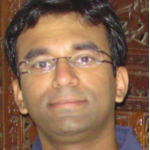Day I, Friday, November 4, 2011
I arrived early on day I of FUDCon Pune 2011 to help with the registration desk. We had different counters for speakers and volunteers, and for delegates. Fedora banners were placed at various seminar locations on campus to indicate where the talks and sessions were being held.
I attended the keynote by Jared Smith, the Fedora Project Leader. The illustrations used in his "Fedora "State of the Union Address" were really good. I then proceeded to the classrooms to attend Ramakrishna Reddy's talk on the Developer Survivor Manual. He addressed essential things that newbie developers need to know and demoed various revision control systems.
In Danishka Navin's Fedora Remix and the Community talk, he shared his experience with the Hanthana project, which is a Fedora remix that has support for Sinhalese and Tamil and has been deployed at various schools in Sri Lanka. Fedora is one of the first and largest users of Gitolite, and I was happy to meet its author, Sitaram Chamarthy, from TCS Innovation Labs, Hyderabad, India. His talk was filled with numerous examples from people using gitolite. The other large users of gitolite are KDE and kernel.org. I then attended the GlusterFS talk by Krishna Srinivas from Red Hat, who gave an overview of the Gluster file system, its architecture, and uses.
Day II, Saturday, November 5, 2011
I arrived early again on day II of FUDCon Pune 2011. The day's proceedings started with a keynote by Harish Pillay on his thoughts on community work, and on his new role as the lead of the Community Architecture team. I then attended the Security in the Open Source world talk by Eugene Teo and Huzaifa Sidhpurwala. Their talk covered quite a bit on the various security threats, and on how they are handled.
Since I attended the GlusterFS overview talk on the first day, I wanted to follow it up with the GlusterFS: Hacking How-to talk by Amar Tumballi. He suggested newbies to read on translators as a starting point to work with Gluster, along with few ideas that they could start with.
After lunch, I headed to Seminar Hall 2 for my talk on Quite Universal Circuit Simulator - A Qt Love Story. It is an introduction to electrical circuit theory using circuit components as "fictional" men and women. The example circuits were created using qucs-0.0.15. The examples are available at gitorious:
$ git clone git://gitorious.org/qucs-a-qt-love-story/qucs-a-qt-love-story_prj.git
After my talk, I went to the auditorium to attend the talk by Amit Shah on Linux Virtualization followed by Kashyap Chamarthy's talk on Virtualization with Libvirt. They had given a good overview of virtualization in the Linux kernel, and available tools that one could use. I do use Publican, and thus attended Jared Smith's talk on the same. Publican does insert blank pages to ensure that new chapters start on the right-hand side if the content were to be printed as a book. For the final talk of the day, I attended Rahul Sundaram's session on Askbot for Fedora, and the roadmap and features that he is interested in. We then travelled to Hotel Parc Estique for the FUDPub!
Final Day, Sunday, November 6, 2011
As a follow-up to my talk on QUCS on day II of FUDCon Pune 2011, I wanted to create circuit examples on the final day from a text book that was being followed for basic electrical engineering course work. This would be a supplement that a student can use when learning circuit theory. Anuj More and Payas Awadhutkar joined in, and we worked on schematics from chapter I of Fundamentals of Electrical Engineering by Leonard S. Boborow, a.k.a "Babu Rao" in India. The schematics were created in qucs-0.0.16, and are available from Payas Awadhutkar gitorious repo:
$ git clone git://gitorious.org/qucs-baburao/qucs-baburao.git
I would like to thank all the volunteers from College of Engineering, Pune and Prof. Abhijit A M who coordinated with us in organizing this conference. Thanks also goes to the Fedora contributors who helped in getting things done. Special thanks to Red Hat for sponsoring the event, and for their wonderful support.
We trained many students over the years as part of the Fedora project. I was very happy to see them as speakers and present on the things that they have been working on, and also help others when required during the conference. This is the best outcome that I take from the event.
The photos that I took at FUDCon Pune 2011 are available in my gallery.







Comments are closed.